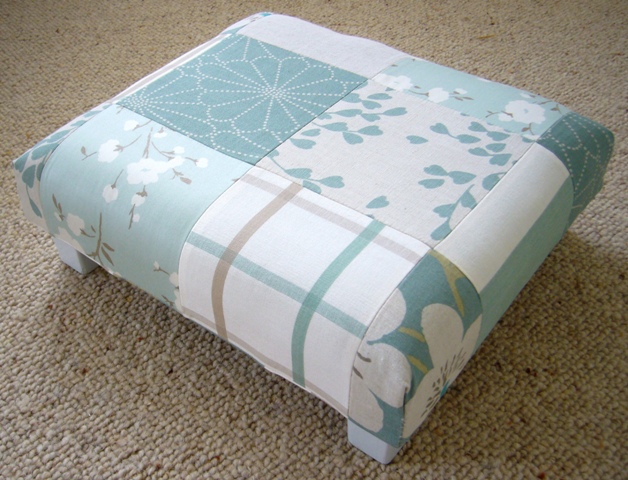
Whether you are just starting out and learning to sew or just love making things with fabric, making a simple bag is a fun way to spend a wet afternoon.
Unless your lifestyle is totally Zen you are bound to have something around the house that lends itself to recycling or more correctly, upcycling. Tea towels for example are excellent, or old pillow cases, sheets or duvet covers, as long as the fabric is strong and still in good order. Old cushion covers can also be good candidates. We’ve used old jeans, too.
To make a tote bag 17″ deep x 15″ wide (43 x 38cm), you will need:
2 pieces of fabric 18″ x 16″ (46 x 40cm), this includes seam allowance
2 long strips of fabric for straps, 20″ (51cm) long x 3 1/2″ (9cm) wide
Sewing cotton

Begin by edging the two pieces of fabric if it is likely to fray, either with a zigzag stitch or an overlock stitch if your machine has one. Pin the two pieces right sides together. Sew down the sides and across the bottom, leaving top edges open.

Press seams open. We’ve used Grey Striped Ticking for the front of the bag and a plain white canvas for the back.

In each of the corners match the side seam with the bottom seam creating a point. Pin in place.
Stitch securely across the corner at right angles Cut off excess fabric and seal edges. This gives the bag a greater carrying capacity as it will accommodate larger items more easily

At the top of the bag, turn 1″ to the inside, press and stitch into place, about 1/2″ from the edge

Make straps. Fold in 1″ along the whole length of the long edge and press. Repeat this for the other side, leaving a small gap in the middle so there is no overlap when the two sides are folded together. Fold, press again, pin and sew in place. Oversew ends or press under 1/2″ to get a clean edge.

Measure 4 1/2″ in from the side seam and mark either with a pin or chalk. Place one end of the strap alongside the pin or chalk mark or as close to this measurement as possible matching stripes as shown, and pin. Repeat for all four straps. Stitch straps to bag with either a box or multiple rows of stitching to make sure the straps are strongly secured.
Press bag to finish.
The possibilities are endless, just let your creativity flow. Some suggestions:
- Add you own designs to the front panel, eg embroidery, hand-painted designs, applique, patch pocket from an old pair of jeans, buttons, beads, iron on patches. It’s easier to do this before making up the bag, so plan your design first if you can. Choose a modern stripe, or if you’re a fan of shabby chic or boho chic go for it.
- Make the bag bigger or smaller. You can make it long and narrow, or make the bottom corner sections bigger so the bag becomes wider.
- The straps can be made narrower or wider, or you can use twisted cord, leather straps, or wooden hoops.
- If you want to use up lots of small pieces of fabric you can create a patchwork panel in the desired size with a plain back, or use patchwork for both. Straps can also be made of multiple pieces as long as they are securely stitched and not too bulky.
- For thinner fabrics you might need to use either double thickness or stitch the lighter fabric to a lining fabric, or you could use iron on vilene to get a firmer result.
Crafting is fun, and carrying your own bag is so much nicer than carrying some brand name around on your arm. Your bag will last much longer than a plastic bag and will be washable and eco-friendly, too. Advertise your own creativity, you never know someone might ask you to make one for them, and they make great presents.
Boot fairs can be good places to find odd pieces of fabric or check if your local church or scout troup are planning a garage sale. You can find patchwork packs in our eBay shop or go to www.designercushionsandthrows.co.uk where we will soon be selling organic linen, cotton and hemp if you want to become more green.
Send in your photos and we can vote for the most creative.
























